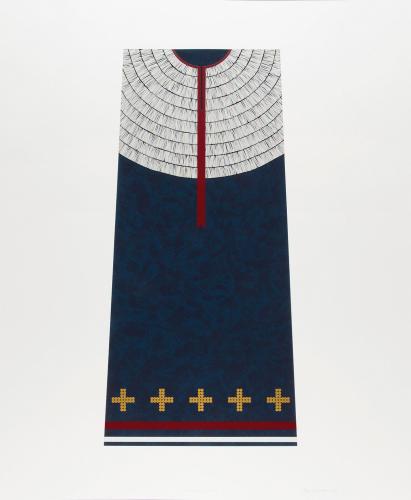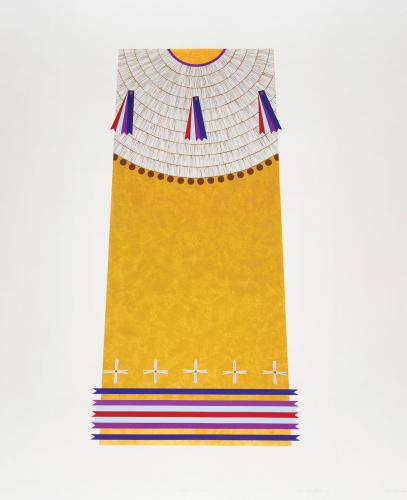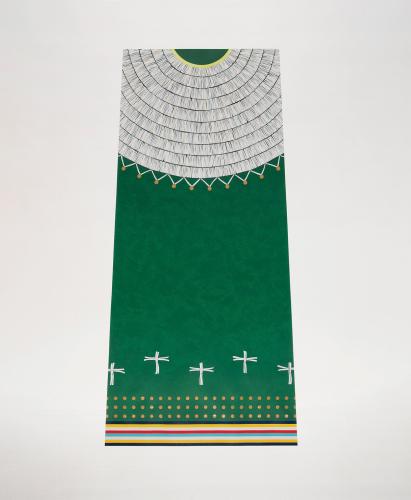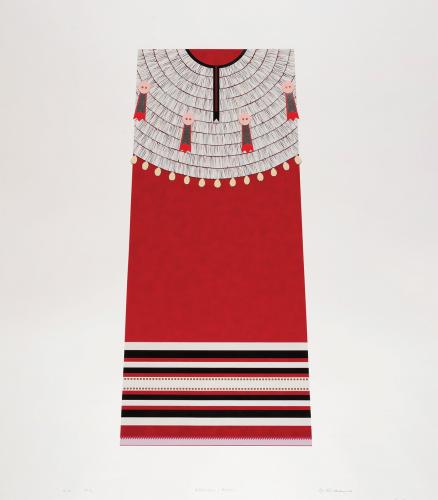Native veterans play significant roles within their communities, often well beyond their time in military service. They often protect and care for others, and some even go on to become tribal leaders. In 2021, the National Museum of the American Indian acquired four stunning screen prints titled “Takes Care of Them” by Sičáŋǧu Lakota artist Dyani White Hawk. The set honors the strength, leadership and care-taking roles of women and veterans in Native American communities.
The prints evoke historical and contemporary Plains women’s dresses, including those White Hawk has studied in the NMAI’s collection. Based in Minnesota, the artist worked collaboratively on the prints with Master Printer Cole Rogers and the staff at Highpoint Center for Printmaking in Minneapolis to painstakingly apply layers of ink to suggest the yokes of dentalium shells as well as the textures of felted wool cloth, satin ribbons, cowrie shells and other materials traditionally used to make these dresses. Metallic foil accents were then individually added by hand.
The rich textures and close attention to detail in these prints are characteristic of White Hawk’s approach to all of her art. She earned fine arts degrees from the Institute of American Indian Arts in Santa Fe, New Mexico, and the University of Wisconsin–Madison. Her paintings, sculptures and mixed-media works draw on Indigenous and modernist abstraction, often incorporating beads and quills or patterns and materials that evoke them.
White Hawk describes the four prints as having individual personalities, representing female relatives at different stages of their lives, from sisters and “aunties” to mothers and grandmothers. Each plays a different role, but they come together to care for their families and communities. White Hawk credits her mother—a U.S. Navy veteran and the first woman to carry the Highground Veterans Eagle Staff as a member of the Oneida Nation Color Guard—with teaching her how to be a “good relative.” White Hawk says that we need such women warriors, those who serve not only on the front lines but at home. The four prints, she says, recognize the “collectivity of the way that we’re raised and nurtured.”




